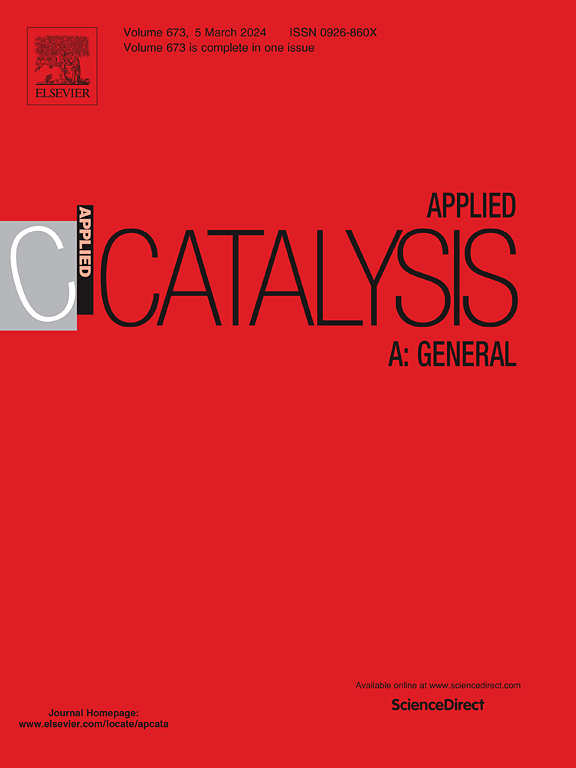Synthesis gas to alcohols over noble metal promoted FeCu-LDH nano catalyst
IF 4.7
2区 化学
Q2 CHEMISTRY, PHYSICAL
引用次数: 0
Abstract
A highly dispersed FeCu/LDH-based catalyst precursor was prepared by co-precipitation method, and the catalysts promoted with Pd, Pt or Rh were then prepared using an equal-volume impregnation method to be used in syngas-to-alcohol reaction. These samples were characterized by XRD, Raman, FT-IR, In-situ DRIFT, XPS, SEM and N2 adsorption desorption. The study reveals that the 2D nanosheet structure of the LDH precursor has a large surface area and evenly distributed active sites, leading to the superior catalyst performance. The promoted catalyst generated even higher catalytic activity and alcohol selectivity, notably reducing undesired methane and CO2 by-products. Rh incorporation obviously enhanced the thermal stability of the catalyst, leading to the long-term retention of the LDH structure. Rich -OH groups offer surface basicity, thereby significantly enhancing its catalytic performance to lower the CO2 selectivity to 1.34 % and methane to 1.67 % while achieving a remarkable alcohol selectivity of 95.1 %. In-situ DRIFT results reveal that Rh promotion helps balance the gaseous adsorption and bridge adsorption of CO for improved overall syngas-to-alcohols reaction results.
贵金属催化FeCu-LDH纳米催化剂上合成气制醇
采用共沉淀法制备了高度分散的FeCu/ ldh基催化剂前驱体,然后采用等体积浸渍法制备了Pd、Pt或Rh促进的催化剂,用于合成气制醇反应。采用XRD、Raman、FT-IR、原位漂移、XPS、SEM和N2吸附脱附等手段对样品进行了表征。研究表明,LDH前驱体的二维纳米片结构具有较大的表面积和均匀分布的活性位点,从而具有优异的催化剂性能。催化剂产生了更高的催化活性和醇选择性,特别是减少了不需要的甲烷和二氧化碳副产物。Rh的加入明显增强了催化剂的热稳定性,使得LDH结构长期保持不变。富-OH基团提供了表面碱性,从而显著提高了其催化性能,将CO2选择性降至1.34 %,甲烷选择性降至1.67 %,而对醇的选择性达到了95.1% %。原位漂移结果表明,Rh促进有助于平衡CO的气体吸附和桥接吸附,从而改善合成气制醇反应的整体结果。
本文章由计算机程序翻译,如有差异,请以英文原文为准。
求助全文
约1分钟内获得全文
求助全文
来源期刊

Applied Catalysis A: General
化学-环境科学
CiteScore
9.00
自引率
5.50%
发文量
415
审稿时长
24 days
期刊介绍:
Applied Catalysis A: General publishes original papers on all aspects of catalysis of basic and practical interest to chemical scientists in both industrial and academic fields, with an emphasis onnew understanding of catalysts and catalytic reactions, new catalytic materials, new techniques, and new processes, especially those that have potential practical implications.
Papers that report results of a thorough study or optimization of systems or processes that are well understood, widely studied, or minor variations of known ones are discouraged. Authors should include statements in a separate section "Justification for Publication" of how the manuscript fits the scope of the journal in the cover letter to the editors. Submissions without such justification will be rejected without review.
 求助内容:
求助内容: 应助结果提醒方式:
应助结果提醒方式:


